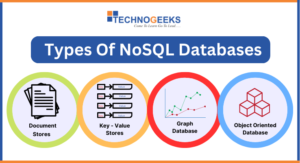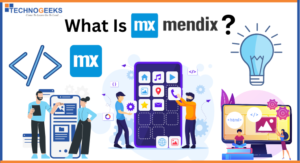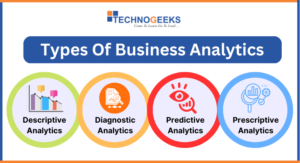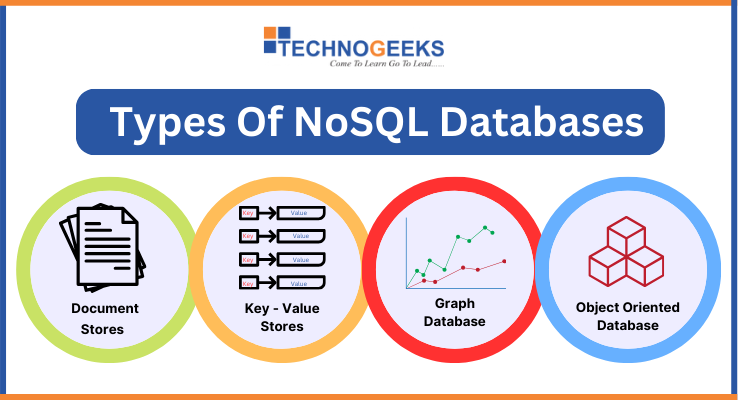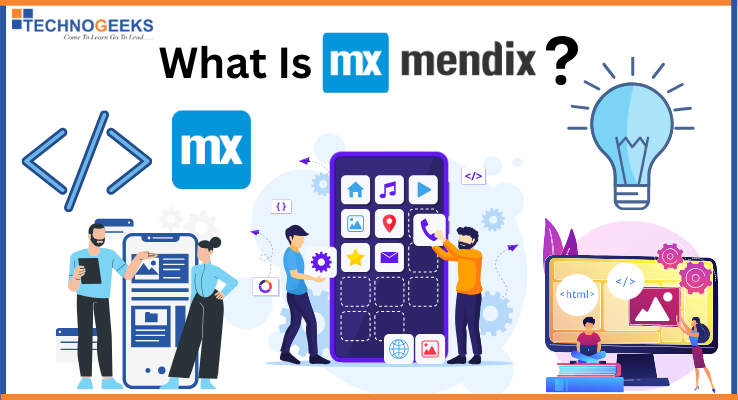Table of Contents
ToggleData Science Course Syllabus Pdf
What is a Data Science Course?
The data science field has been really promising in the years 2022–23, and it will stay the same for at least a decade or so. Modern forecasting and decision-making relied on it.
The operating of businesses and their service delivery have been drastically optimized because of that. It has now become a very important skill that one must have if he / she wants to succeed in this data-driven world.
People may acquire the skills they need to effectively use data to draw conclusions and make choices via the help of a Data Science Course in Pune. This course focuses on – data analysis & its uses.
Level up your skills in Data Science. Enroll now and become an expert.
What Is Data Science Course Syllabus
A Data Science Course Syllabus is like a roadmap that shows you what you’ll learn in a data science course in Pune. It’s a rundown of all the concepts & abilities covered throughout the training. In order to prepare you for what is ahead.
Enroll now and take the first step towards a successful career. Click here to join our courses today!
Data Science Course Syllabus
Section 1 – Core Python & Advance Python
Module 1 – Introduction to Python
- What is Python and brief history
- Why Python and who use Python
- Discussion on Python 2 and 3
- Unique features of Python
- Discussion on various IDE’s
- Demonstration of practical use cases
- Python use cases using data analysis
Module 2 – Setting up and Installations
- Installing python
- Setting up Python Development Environment
- Installation of Jupyter Notebook
- How to access our course material using Jupyter
- Write your first program in Python
Module 3 – Python Object And Data Structures Operations
- Introduction to Python objects
- Python built-in functions
- Number objects and operations
- Variable assignment and keywords, String objects and operations
- Print formatting with strings
- List objects and operations
- Tuple objects and operations
- Dictionary objects and operations
- Sets and Booleans
- Object and data structures assessment test
Module 4 – Python Statements
- Introduction to Python statements
- If, elif and else statements
- Comparison operators
- Chained comparison operators
- What are loops?
- For loops
- While loops
- Useful operator
- List comprehension
- Statement assessment test
- Game challenge
Module 5 – UDF Functions and Methods
- Methods
- What are the various types of functions?
- Creating and calling user-defined functions
- Function practice exercises
- Lambda Expressions
- Map and filter
- Nested statements and scope
- Args and kwargs in Python
- Functions and methods of assignment
- Milestone Project (Making tic-tac-toe in Python)
Module 6 – File and Exception Handling
- Processing files using Python
- Read/write and append file object
- File functions
- File pointer and operations
- Introduction to error handling
- Try, except and finally
- Python standard exceptions
- User defined exceptions
- Unit testing
- File and exceptions assignment
Module 7 – Python Modules, Packages & Inbuilt Modules
- Python inbuilt modules
- Creating UDM-User-defined modules
- Passing command line arguments
- Writing packages
- Define PYTHONPATH
- __name__ and __main__
Module 8 – OOPs Concepts in Python
- Object oriented features
- Implement object oriented programming with Python
- Creating classes and objects
- Class attributes
- Creating methods in a class
- Inheritance
- Polymorphism
- Special methods for the class
- Assignment: Creating a Python script to replicate deposits and withdrawals in a bank with appropriate classes and UDFs
Module 9 – Advanced Python Modules
- Collections module
- Datetime
- Python debugger
- Timing your code
- Regular expressions
- StringIO
- Python decorators
- Python generators
Module 10 – Package Installation and Parallel Processing
- Python inbuilt modules
- Install packages on python
- Introduction to pip, easy install
- Multithreading
- Multiprocessing
Section 2 – Data Analytics & Data Visualization
Module 11 – Data Analysis using Advance Excel
- Introduction in Excel
- Data Cleaning & Preparation
- Formatting & Conditional Formatting
- Lookup Function
- Analyzing data with Pivot Tables
- Charts
- Data Visualization/Dashboarding using excel
- Data Analysis using statistics
Module 12 – Data Analysis with Python
- Introduction to data analysis
- Why Data Analysis?
- Data analysis and Artificial Intelligence Bridge
- Introduction to Data Analysis Libraries
- Data analysis introduction assignment challenge
Module 13 – Data Analysis Using Numpy
- Introduction to Numpy Arrays
- Creating and applying functions
- Numpy Indexing and selection
- Numpy Operations
- Exercise and assignment challenge
Module 14 – Pandas and Advanced Analysis and Excel integration
- Introduction to the Series
- Introduction to DataFrames
- Data manipulation with pandas
- Missing data
- Groupby
- Merging, Joining, and Concatenating
- Operations
- Data Input and Output
- Pandas’ in-depth coding exercises
- Text data mining and processing
- Data mining applications in Data engineering
- File system integration with Pandas
- Excel integration with Pandas
- Operations on Excel using a dataframe
- Data aggregation on Excel Data
- Data visualization using Excel Data
- Milestone Project – 2
Module 15 – Data Visualization with Python
- Matplotlib
- Plotting using Matplotlib
- Numpy arrays
- Plotting using an object-oriented approach
- Subplots using matplotlib
- Matplotlib attributes and functions
- Matplotlib exercises
- Seaborn Visualization
- Categorical Plot
- Distributional plots using Seaborn
- Matrix plots
- Grids
- Seaborn exercises
Project – Getting insights using python analysis and visualizations on finance credit score data.
Assignment – Pandas’ built-in Data visualization
Elective Modules
Module 16 – Data Visualization with Tableau
- Comparison Between Tableau & Programming-based Data Visualization
- Need Of Tableau
- Types Of Data Sources Supported By Tableau For Report Development
- How to Build Report & Dashboard in Tableau
- How To Build Charts In Tableau
- Data Visualization Using Tableau Features
- Types of Graphs
- Multiple graph combinations
- Multi-file format support in Tableau
- Data analysis without visualization
- Data analysis with visualization
Module 16 – Data Visualization with Power BI
- Elements
- Bookmarks
- Buttons
- New Tooltips
- Conditional Formatting
- Working with Interactions
- Publish Power BI Dashboards
- Power BI Service
- Export Reports to PowerPoint, PDF
- Implementing Gateways
- Working with Parameters
- Final Deployment of the Dashboard
Section 3 – Mathematics and Statistics for Data Science
Module 17 – Mathematics and Statistics for Data Science
- The Need for Mathematics for Data Science
- Exploratory data analysis (EDA)
- Numeric Variables
- Qualitative and Quantitative Analysis
- Types of Data Formats
- Measuring the Central Tendency – The Model
- Measuring Spread – Variance and Standard Deviation
- Euclidean Distance
- Confidence Coefficient
- Understanding Parametric Tests
Section 4 – Artificial Intelligence
Module 18 – Introduction to Machine Learning with Python
- Introduction to Artificial Intelligence
- Introduction to Machine Learning
- Need for Machine Learning in Forecasting
- Demand of forecasting analytics in current industrial trends
- Scope of ML
- Introduction to Machine Learning Algorithm Categories
- Supervised and Unsupervised Learning
Module 19 – Machine Learning Algorithms
Linear Regression with Python
- Introduction to Regression
- Exercise on Linear Regression using Scikit Learn Library
- Project on Linear regression using USA_HOUSING data
- Evaluation of Linear regression using python visualizations
Practice project for Linear regression using advertisement data set to predict appropriate advertisements for users.
K- Nearest neighbours using Python
- Introduction to Regression
- Project on Logistic Regression using Dogs and Horses’ dataset
- Getting the correct number of clusters
- Standard scaling problems
- Practice project on the KNN algorithm.
Decision tree and Random forest with python
- Intuition behind Decision Tree
- Implementation of a decision tree using a real time dataset
- Ensemble learning
- Decision tree and random forest for regression
- Decision tree and random forest for classification
- Evaluation of the decision tree and random forest using different methods
- Practice project on decision tree and random forest using social network
- Data to predict if someone will purchase an item or not
Support Vector Machines (SVM)
- Linearly separable data
- Non-linearly separable data
- SVM project with telecom dataset to predict the users’ portability
Principal Component Analysis (PCA)
- Introduction to PCA
- Need for PCA
- Implementation to select a model on breast-cancer dataset
- Model evaluation
- Bias variance trade-off
- Accuracy paradox
- CAP curve and analysis
Clustering in unsupervised learning
- K-means clustering intuition
- Implementation of K-means with Python using mall customers’ data to implement clusters on the basis of spending and income
- Hierarchical clustering intuition
- Implementation of Hierarchical Clustering with Python
Association Algorithms
- A priori theory and explanation
- Market basket analysis
- Implementation of Apriori
- Evaluation of association learning
POC – To make a model to predict the relationship between frequently bought products together on the given dataset from a supermarket.
Module 20 – Natural Language Processing (NLP) with NLTK
- Introduction to Natural Language Processing (NLP)
- NLTK Python library
- Data stemming technique
- Data Vectorization
- Exercise on NLTK
- POC – Apply NLP techniques to understand reviews given by customers in a dataset and predict if a review is good/bad without human intervention.
Module 21 – Deep Learning with TensorFlow and Keras
- Neural Networks and Deep Learning
- What is TensorFlow?
- TensorFlow Installation
- TensorFlow basics
- TensorFlow with Contrib Learn
- TensorFlow Exercise
- What is Keras?
- Keras Basics
- Pipeline implementation using Keras
- MNIST implementation with Keras
Section 5 – Working with Databases with Python
Module 22 – SQL (Structured Query Language)
- What is SQL?
- Why do we need SQL integration with Python?
- Data types in SQL
- DDL, DML, and TCL sub-languages in SQL
- Significance and type of Joins in SQL
- Where clause in SQL
- Group by clause in SQL
- Create command in SQL
- Insert command in SQL
- Select command in SQL
- Select command variants in SQL
- Update command in SQL
- Delete command in SQL
- Drop command in SQL
- Truncate command in SQL
- Commit and rollback concepts in SQL
- SQL integration with Python
- Table operations in SQL using Python
- Working on multiple tables using Python and SQL
- CRUD operations in SQL
Module 23 – Rest API with and Flask
- REST principles
- Creating application endpoints
- Implementing endpoints Using Postman for API testing
- Python, database and front-end integration concepts and implementation
Module 24 – Rest API Integration with Databases for Web App Development
- CRUD operations on the database
- REST principles and connectivity to databases
- Creating a web development API for login registers and connecting it to the database
- Deploying the API on a local server
Section 6 – Major Project
Module 25 – Major Project
- Project use cases Introduction
- Project Scenarios
- Project life cycle
- What is version control in project management?
- What is GitHub?
- Significance of GitHub in Project Management
- Code submission for testing and deployment
- Predictive analytics tools and techniques
- Project best practices
As you can this course syllabus divided in four section such as –
Section 1 – Core Python And Advanced Python
Section 2 – Data Analytics And Data Visualization
Section 3 – Mathematics And Statistics For Data Science
Section 4 – Artificial Intelligence
Section 5 – Working With Databases With Python
Section 6 – Major Projects
Let’s Briefly explain one by one sections of data science course syllabus
Section 1 – Core Python And Advanced Python
Python programming is the starting point of the course since it is useful for those with and without IT experience. Learning Python is the first step toward a career in data science. You must really learn this language.
In Core and Advanced Python, we covered topics such as:
- Introduction to Python:- Get familiar with Python and why it’s important for data science.
- Setting up and installations: Learn how to set up Python and the tools you need.
- Python Objects and Data Structures Operations:- Explore the basic building blocks of Python, such as Python built-in functions, variable assignment, and keywords. String objects and operations, Print formatting with strings, lists, tuples, dictionaries, sets, booleans, and more.
- Python Statements: Understand how to make decisions and work with data.
- UDF Functions and Methods: Learn functions and methods and apply them to real projects.
- File and Exception Handling: Manage data files and handle errors effectively.
- Python Modules, Packages, and Inbuilt Modules:- Discover Python’s powerful tools for data analysis.
- OOPs Concepts in Python: Learn object-oriented programming concepts such as encapsulation, polymorphism, abstraction, and inheritance, which are very important to learn data science.
- Advanced Python Modules: Explore advanced topics that enhance your data analysis abilities.
- Package Installation and Parallel Processing: Understand how to install software packages and make your programs run faster.
Section 2 – Data Analytics And Data Visualization
The most important topic here is Data Analytics and Data Visualization which are very important concepts to learn in data science. We handle (clean, analyze) the data using the concepts in Data Analytics and Data Visualization. We need to learn them because of this.
For example:- Data Analytics is like your detective kit for examining data. It helps you
- clean up messy information
- spot hidden patterns
- uncover valuable insights
It’s the first step in making sense of data.
Data Visualization:- It’s your magic wand for turning those insights into clear and colorful stories.
It converts your tables of data into visuals (charts, graphs, dashboards). It makes it very easy to grasp for anyone (Especially non-technical people).
In the Data Analytics and Data Visualization section, we covered topics such as:
- Data Analysis with Advance Excel
- Data Analysis with Python
- Data Analysis Using Numpy
- Pandas And Advanced Analysis
- Data Visualization with Python
- Pandas
- Seaborn Visualization
- Data Visualization using Power BI
- Data Visualization using Tableau BI Tool
Section 3 – Mathematics and Statistics for Data Science
Data science would not function without the use of mathematics and statistics. Important because – scientists can understand data because of them.
We can find out patterns with the help of many functions of Statistics (like a detective!). For example:- weather forecasts use probability theory.
Mathematical concepts are the equivalent of a well guarded recipe for creating cutting-edge computer programs. With math, we can create models that make predictions or solve problems, a bit like magic spells for data.
In the Mathematics and Statistics for Data Science section, we covered topics such as:
- Need of Mathematics for Data Science
- Exploratory data analysis (EDA)
- Numeric Variables
- Qualitative and Quantitative Analysis
- Types of Data Formats
- Measuring the Central Tendency – The Model
- Measuring Spread – Variance and Standard Deviation
- Euclidean Distance
- Confidence Coefficient
- Understanding Parametric Tests
Section 4 – Artificial Intelligence
AI’s Significance in Data Science:
- Simplifies tasks.
- Enhances predictions.
- Handles large data volumes swiftly.
- Enables natural language understanding.
- Powers:- recommendation systems, image analysis, and anomaly detection.
- Accelerates & improves data analysis.
- Helps people make better decisions & get better ideas from data.
In the Artificial Intelligence section, we covered topics such as:
- Introduction to Machine Learning with Python
- Machine Learning Algorithms
- Linear Regression with Python
- K- Nearest neighbors using Python
- Decision tree and Random forest with python
- Support Vector Machines
- Principal Component Analysis
- Clustering in unsupervised learning
- Association Algorithms
- Natural Language Processing (NLP) with NLTK
- Deep Learning with TensorFlow and Keras
Section 5 – Working with Databases with Python
Role of SQL in Data Science:-
- Crucial for getting access and changing the shape of database-stored structured data.
- Facilitates quick searching, sorting, and grouping.
- A basic skill for data experts who work with big sets of data.
- Important in order to get useful information from the database.
In the SQL programming section, we covered topics such as:
- What is SQL?
- Rest API with and Flask
- Rest API Integration with Databases for Web App Development
Section 6: Major Project
In this section, we covered:
- Project Use Cases Introduction: It’s about outlining the project’s specific applications and goals.
- Project Scenarios: These are potential situations the project might encounter.
- Project Life Cycle: It’s the sequence of phases from start to finish in a project.
- Version control in project management involves tracking changes to project files for the organization.
- GitHub: It’s a web-based platform for version control and collaboration that is highly useful in project management.
Conclusion
The data science course syllabus outlines how to become a data scientist. As we can see in the blog we cover important topics from Python programming to advanced concepts like machine learning & data visualization.
The Technogeeks Data Science Course in Pune covered daily assignments and real-world projects to ensure hands-on learning. Hands-on activities, projects, and real-world use cases teach students.
Remember:- data science is considered a “hot skill” in this digital world. And this data science course syllabus is the best for you to grab that skill.
Learn 6 Courses In 1 Data Science Specialization Track In Pune With Placement
Call Us +91 8600998107 / +91 7028710777 For More Details





